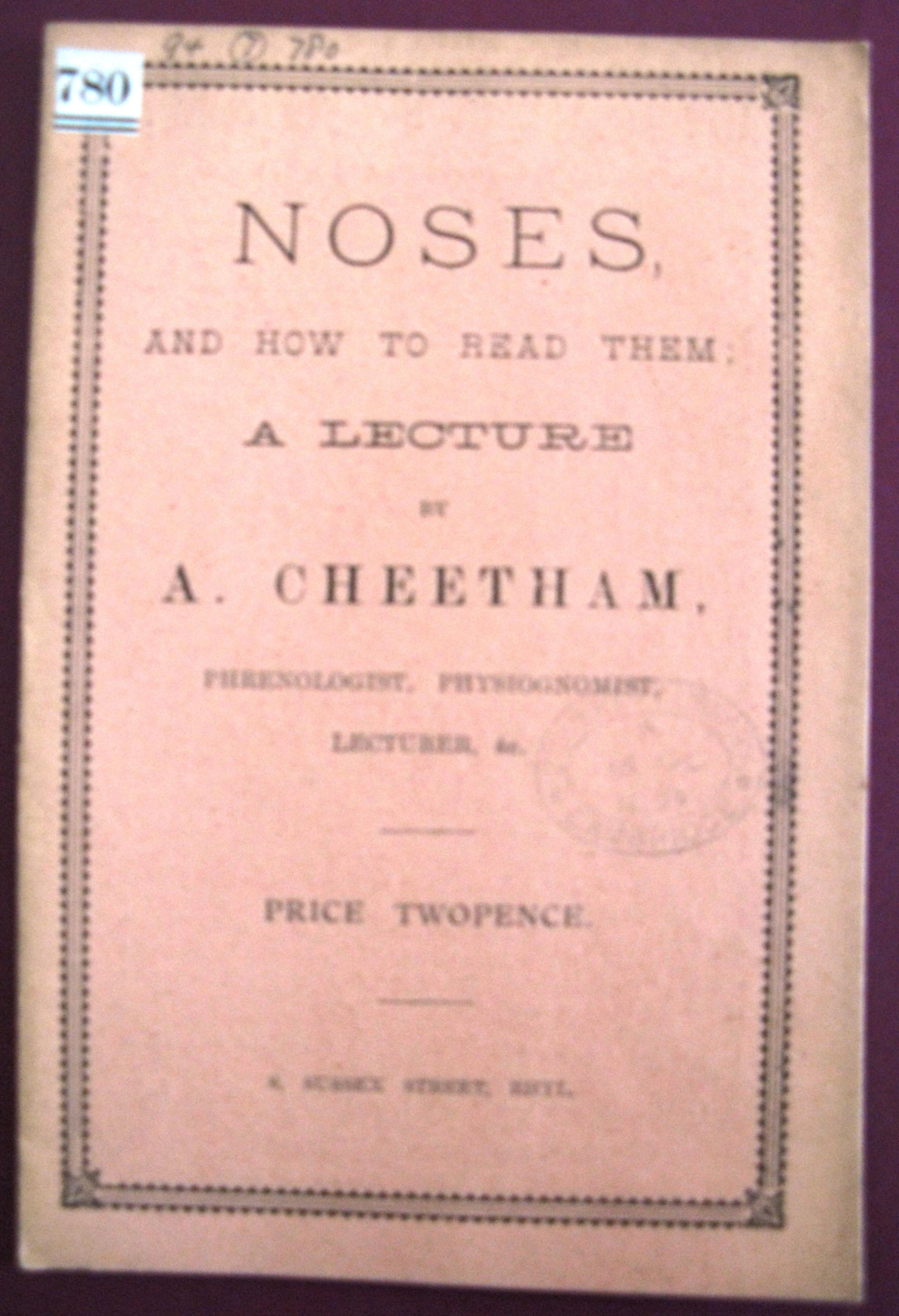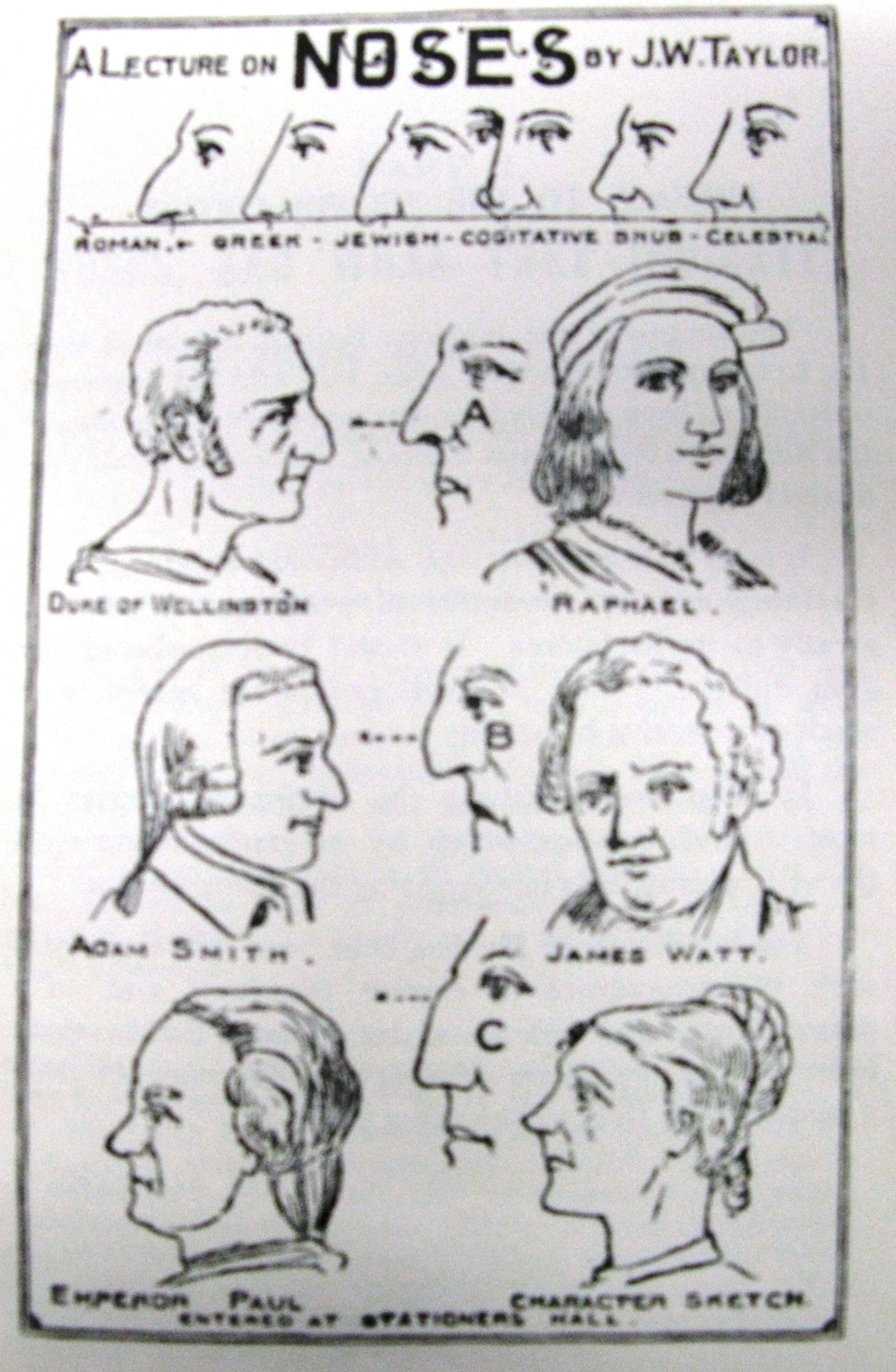The nose is the most prominent feature of the face, and the art of reading character by the nose is one of the most interesting of human studies
Noses and What They Indicate is one of many books that were published on physiognomy, or the art of understanding personalities based on facial features. This blog has already covered books on moles and moustaches but this work obviously concentrates just on the nose.
The author claims that the nose is the one facial feature which can’t be hidden (by either a large hat or facial hair) and is always on show for the world to see. Therefore it is one of the most important indicators of character and its study should not be taken lightly.
The Roman nose is described as being “the nose of a conqueror” and people who have this type of nose often make natural leaders, with examples such as Queen Elizabeth and Gladstone. The cognitive nose is found “among men of all pursuits” but especially those who “gain the highest kind of excellence in every department”. Famous theologians Luther and Wesley are prime examples of this type of nose. Celestial noses, which are often slightly upturned at the end, are admired in the fairer sex but not very popular in men due to their somewhat feminine appearance.
The book also points out the importance of nose breathing in order to prevent disease. It talks about the small hairs inside the nose which help to trap germs and can be particularly useful in preventing consumption. Proper and full breathing is advocated as is drawing water up the nostril, although to be honest I’m not sure that last one is very healthy…!
Although volunteers were sought from the Tower Project office to have their noses analysed, sadly there were no takers. Instead we’ve decided to look at some famous noses, based on the principles laid out in the book:
Barry Manilow: his slightly hooked nose indicates that he’s a talkative individual whilst the rounded tip equals a good character
Barbra Streisand: her famous nose indicates tenderness and shows that she’s a sensitive soul
Stephen Fry: the shape of his nostrils show that he has a high I.Q. whilst the wings of his nose show that he’s a curious individual
So far I would like to think that these books seem pretty accurate. Next time you are sizing someone up (for whatever reason!) maybe you should pay more attention to the shape of their nose. It could be telling you more than you think…
Noses and What They Indicate: 1912.7.3037
Image credits: ladybugbkt, JCT(loves)Streisand, lewishamdreamer on Flickr






What about Cleopatra?
It’s hard to find an exact picture of Cleopatra so I can’t be sure. Based on the pictures I ‘ve found I’m going to say that she had a Roman nose which made her a natural leader. If you can find a better picture let me know!